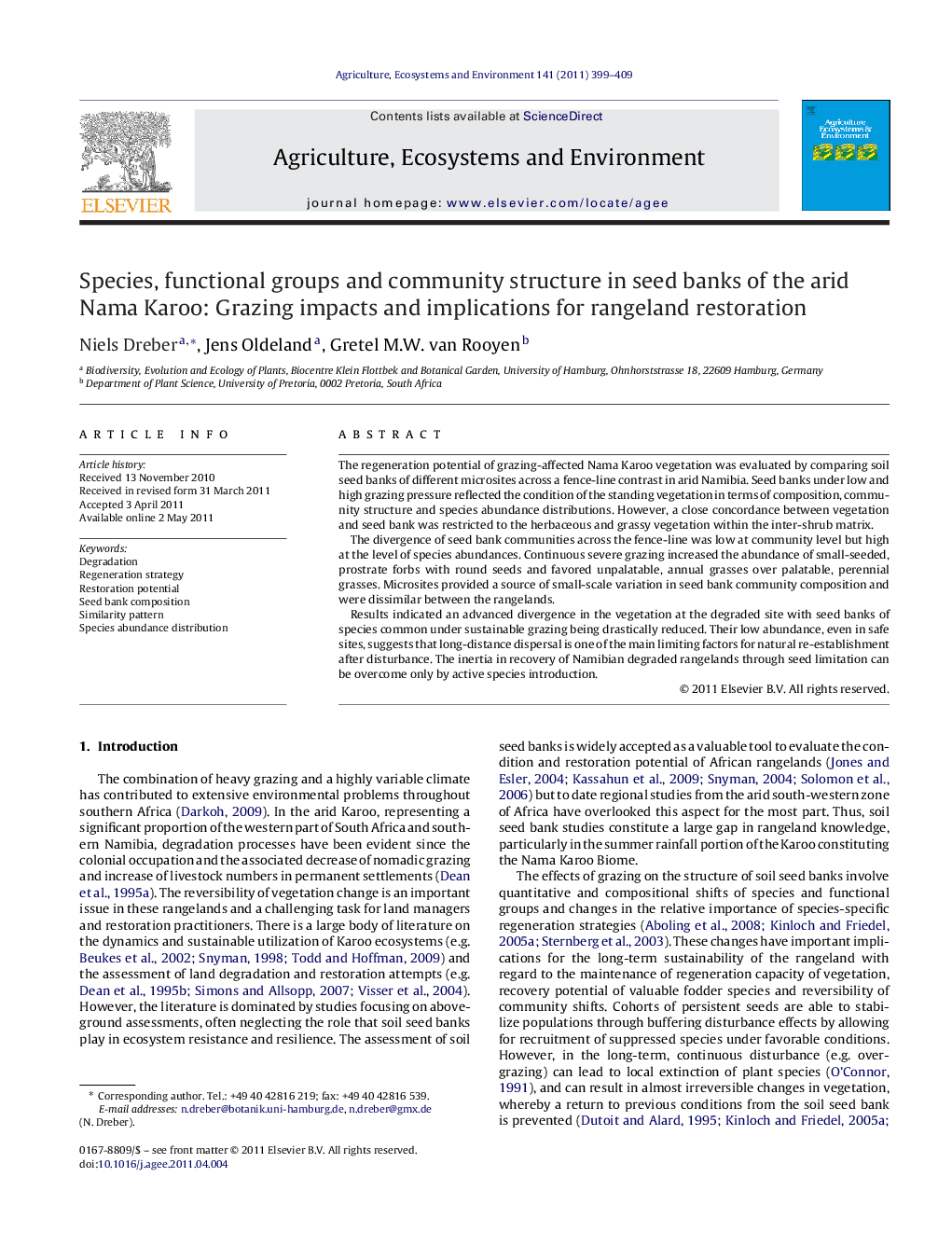| کد مقاله | کد نشریه | سال انتشار | مقاله انگلیسی | نسخه تمام متن |
|---|---|---|---|---|
| 2414833 | 1552108 | 2011 | 11 صفحه PDF | دانلود رایگان |

The regeneration potential of grazing-affected Nama Karoo vegetation was evaluated by comparing soil seed banks of different microsites across a fence-line contrast in arid Namibia. Seed banks under low and high grazing pressure reflected the condition of the standing vegetation in terms of composition, community structure and species abundance distributions. However, a close concordance between vegetation and seed bank was restricted to the herbaceous and grassy vegetation within the inter-shrub matrix.The divergence of seed bank communities across the fence-line was low at community level but high at the level of species abundances. Continuous severe grazing increased the abundance of small-seeded, prostrate forbs with round seeds and favored unpalatable, annual grasses over palatable, perennial grasses. Microsites provided a source of small-scale variation in seed bank community composition and were dissimilar between the rangelands.Results indicated an advanced divergence in the vegetation at the degraded site with seed banks of species common under sustainable grazing being drastically reduced. Their low abundance, even in safe sites, suggests that long-distance dispersal is one of the main limiting factors for natural re-establishment after disturbance. The inertia in recovery of Namibian degraded rangelands through seed limitation can be overcome only by active species introduction.
► Soil seed banks generally reflect condition of herbaceous and grassy vegetation.
► Severe grazing affects species abundance distributions rather than composition.
► Vegetative rather than regenerative plant traits respond to grazing intensity.
► Seed composition vary with the spatial heterogeneity of the biophysical environment.
► Shrub understoreys do not necessarily provide a seed pool for vegetation restoration.
Journal: Agriculture, Ecosystems & Environment - Volume 141, Issues 3–4, May 2011, Pages 399–409